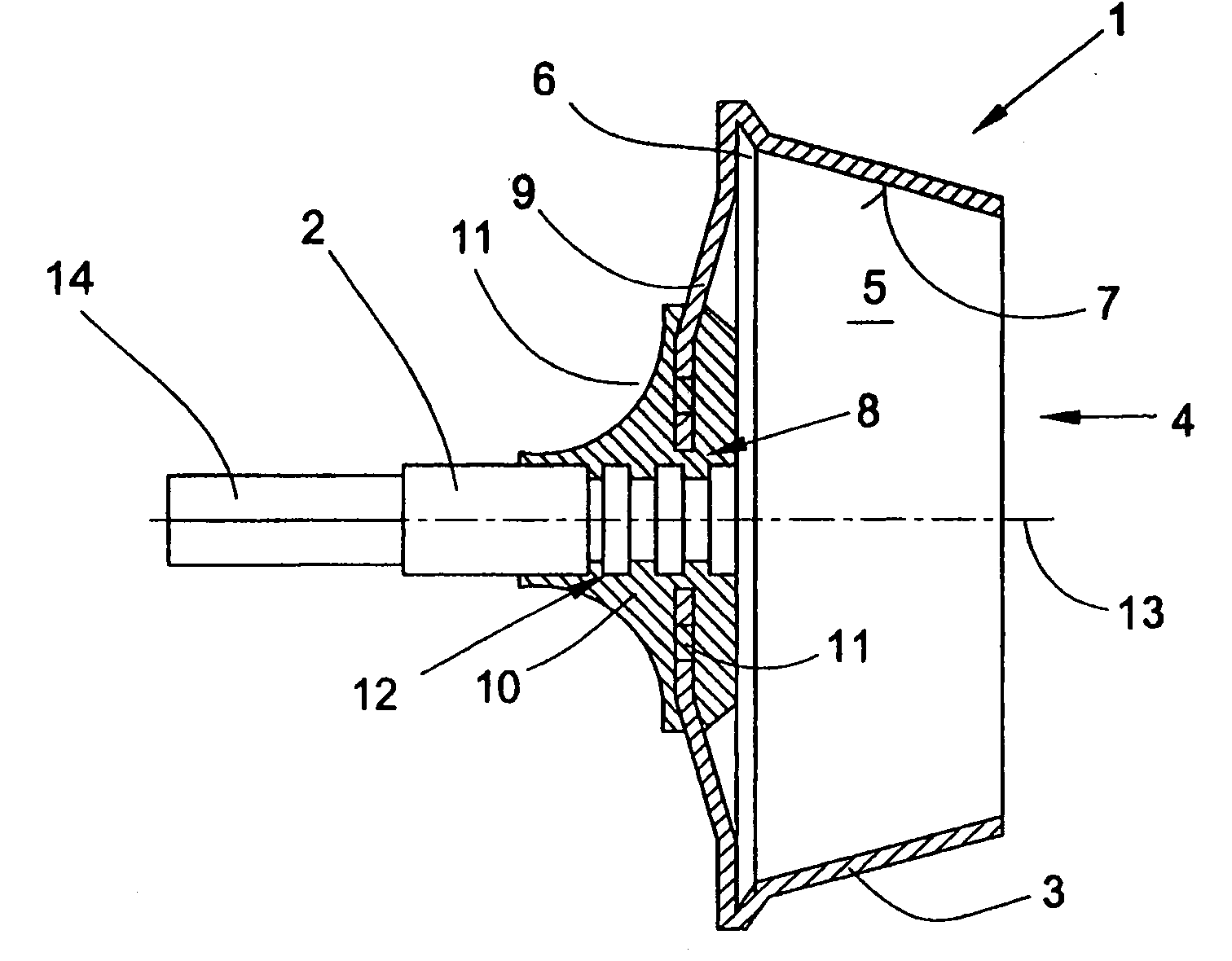Spinning rotor
a spinning rotor and spindle technology, applied in the field of spinning rotors, to achieve the effect of reducing the run-up time of the rotor, cost saving per machine, and reducing the energy consumption of the spinning station
- Summary
- Abstract
- Description
- Claims
- Application Information
AI Technical Summary
Benefits of technology
Problems solved by technology
Method used
Image
Examples
Embodiment Construction
[0022]FIG. 1 shows a spinning rotor 1 of an open end rotor spinning machine which is known per se and therefore not shown explicitly. As described in relative detail, for example in EP 0 972 868 A2, such open end rotor spinning machines, in each case, have a rotor housing which can be subjected to reduced pressure, in which the rotor cup 3 of the spinning rotor 1 rotates at a high rotational speed about its central axis 13.
[0023]The spinning rotor 1 is in this case driven, for example, by an electric motor single drive. The spinning motor 1 is supported, in this case by its rotor shaft, in a magnetic bearing arrangement, not shown, which fixes the spinning rotor 1 both radially and axially.
[0024]In order to be able to dismantle spinning rotors 1 of this type if necessary, in particular the rotor cups 3 subjected to wear, it is known to configure the rotor shafts of spinning rotors of this type in two parts. In other words, the rotor shafts of spinning rotors of this type, as shown i...
PUM
| Property | Measurement | Unit |
|---|---|---|
| wall thickness | aaaaa | aaaaa |
| wall thickness | aaaaa | aaaaa |
| pressure | aaaaa | aaaaa |
Abstract
Description
Claims
Application Information
 Login to View More
Login to View More - R&D
- Intellectual Property
- Life Sciences
- Materials
- Tech Scout
- Unparalleled Data Quality
- Higher Quality Content
- 60% Fewer Hallucinations
Browse by: Latest US Patents, China's latest patents, Technical Efficacy Thesaurus, Application Domain, Technology Topic, Popular Technical Reports.
© 2025 PatSnap. All rights reserved.Legal|Privacy policy|Modern Slavery Act Transparency Statement|Sitemap|About US| Contact US: help@patsnap.com


